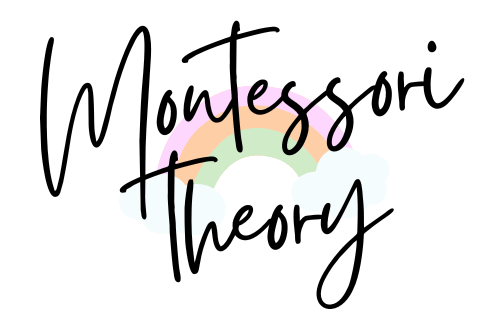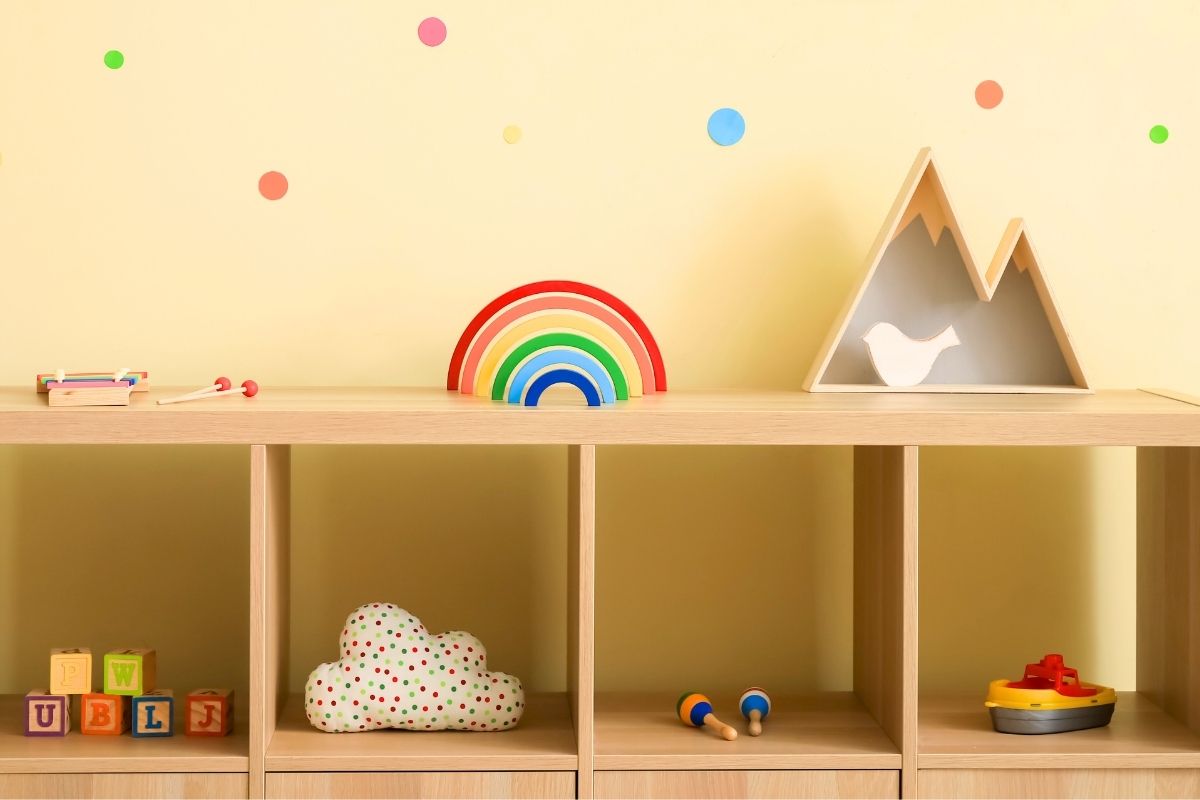Children often become disengaged and bored due to an overwhelming number of toys. The Montessori method addresses this through effective toy rotation, creating a focused and enriching play environment. By regularly rotating toys, children experience renewed interest and deeper exploration, leading to enhanced learning and development. Learn how to successfully implement this transformative approach in your home, and watch as your child’s playtime becomes an ever-evolving adventure in learning and discovery.
Montessori Playroom Toy Rotation Fundamentals
Toy rotation in the Montessori context is a key strategy for enhancing children’s learning and development. More than just organization, it’s about selecting a limited number of toys and rotating them to avoid overwhelming children with too many choices. This approach, grounded in the Montessori principle of ‘less is more’, where fewer, thoughtfully picked toys at any given time lead to richer play, deeper engagement, heightened creativity, and more effective learning. Carefully chosen toys encourage richer play and creativity. In Montessori homes, this strategy keeps play areas tidy and focused, fostering an environment conducive to learning. By providing just enough toys, we help children focus and explore each activity thoroughly, supporting their growth and interest in learning.
Why Toy Rotation Matters
In today’s fast-paced world, children are often bombarded with endless toys and stimuli, which can lead to shallow engagement. Montessori presents a valuable alternative. By offering children fewer toys, they learn to engage with them more intensely. This in-depth engagement enhances their concentration, feeds their curiosity, and strengthens their ability to play independently.
A revealing study in 2018 published in Infant Behavior and Development revealed that children who had access to fewer toys engaged more creatively and for longer periods. This finding supports the idea that a limited number of toys can significantly boost a child’s focus, creativity, and overall quality of play. It’s a compelling endorsement of the Montessori approach of toy rotation, showing that presenting fewer toys can profoundly benefit a child’s development, fostering deeper engagement and imaginative play.
Rotating Toys Impact on Children
As parents, we’ve seen firsthand how rotating toys can rejuvenate a child’s environment, making it consistently fresh and intriguing. Imagine the joy and surprise when a familiar toy makes a comeback after being away for a while – it’s almost like an old friend returning with new tales to explore. This rekindled interest is a powerful tool that can spark a child’s eagerness for learning and discovery, which is at the heart of Montessori philosophy.
Rotating toys serves multiple purposes:
- Maintains Engagement: It’s easy for children to feel overwhelmed or lose interest with too many toys. By rotating their toys, we bring back forgotten favorites, reigniting their curiosity and engagement.
- Encourages Concentration: A smaller selection of toys means children can focus more intently on their play, delving deeper into each activity.
- Supports Development: By aligning toy rotation with our child’s developmental stage, we ensure they’re always interacting with materials that provide just the right level of challenge and stimulation.
- Keeps Playtime Fresh and Engaging: Unlimited access to toys can lead to quick boredom. The reintroduction of toys keeps playtime dynamic and exciting.
- Reduces Clutter and Teaches Organization: Rotating toys helps limit the number of items in the play area, reducing clutter and fostering a peaceful learning environment. This also teaches children the importance of organization and caring for their belongings.
Aligning Toys with Developmental Stages
Aligning toys with our child’s developmental stage is a crucial aspect of Montessori toy rotation. As children grow and evolve, so do their interests and abilities. A toy that captivates a toddler may no longer be appealing to a preschooler. By being mindful of these developmental milestones, we can introduce and reintroduce toys that are age-appropriate and skill-appropriate. This ensures that the toys continue to challenge and engage our children, without causing frustration or boredom.
How to Easily Implement Toy Rotation at Home
As parents, we’re always looking for ways to enrich our children’s learning experiences, and implementing a Montessori toy rotation system at home can be a highly effective strategy. This process is more than just periodically swapping out toys; it involves a thoughtful assessment of your child’s current interests, developmental stage, and the educational value of each toy.
1. Assessing the Toy Collection
Begin by taking a close look at your existing toy collection. Ideal Montessori toys are educational, age-appropriate, and resonate with your child’s interests. They should stimulate exploration, creativity, and problem-solving. Toys that no longer engage your child or have become too easy for their developmental level are perfect candidates for rotation.
2. Categorizing and Selecting Toys
Next, organize toys into various categories based on their purpose and educational benefit. You might have categories like sensory toys, puzzles, language development toys, and practical life tools. This helps ensure a diverse range of toys in each rotation, providing your child with a broad spectrum of learning opportunities.
3. Setting Up the Rotation
When it comes to the actual rotation, aim to have around 8-10 toys available at a time. This number can vary depending on the size of your play area and your child’s ability to concentrate. Keeping the number of toys limited helps to maintain focus and interest.
4. Creating an Inviting Space
The play area should be welcoming and well-organized. Use low shelves to display toys, making them easily accessible and visible. A child-sized bookshelf for books should be included too, to encourage reading and independence in choosing and returning books. This arrangement not only creates an appealing space but also encourages your child to take charge of their play and learning.
5. Observing and Adjusting
Keep an eye on how your child interacts with the toys. In Montessori, observation is key. It lets you see what’s working and what isn’t, allowing you to tailor future rotations to better meet your child’s changing needs and interests.
6. Involving Your Child
As your child grows, include them in the rotation process. Let them help decide which toys to bring out. This not only empowers them but also gives you insights into their evolving preferences and developmental stages.
Optimizing Toy Rotation Frequency for Maximum Engagement
Determining the right frequency for rotating toys is crucial for keeping your child engaged. The timing can vary based on your child’s age, interests, and the type of toys. Generally, rotating toys every few weeks is a good practice. However, be flexible and adjust the schedule as needed based on your child’s response and the introduction of new toys or activities in their life.
-
Signs It’s Time to Rotate
As a parent, I’ve learned to pay close attention to my child’s behavior for signs that it’s time to rotate toys. Common indicators include a shorter attention span, less engagement with their toys, or a general lack of interest in playtime. These signs suggest that your child might be ready for new challenges and experiences, which can be introduced with a different set of toys.
-
Recommended Frequency
In terms of how often to rotate toys, I’ve found that every 2-3 weeks generally works well. However, this can vary depending on factors like your child’s age, their current interests, and the types of toys they’re using. Younger children often benefit from more frequent rotations to keep pace with their rapid development, while older children may prefer longer periods with each set of toys to fully explore and master them.
-
Impact of Routine Changes
Life changes, such as starting school or participating in a new activity, can also be excellent opportunities to rotate toys. These events can shift a child’s focus and interests, providing a perfect chance to refresh their play area with new and exciting toys.
-
Creating a Rotating Schedule
Flexibility is key when establishing a toy rotation schedule. It’s important to stay attuned to your child’s needs and adjust the rotation accordingly. Keeping track of when toys are rotated and observing your child’s interactions with them can be incredibly helpful. This approach allows you to adapt the rotation schedule to best support your child’s engagement and development.
-
Including Seasonal and Educational Toys
Integrating seasonal toys that reflect the current time of year or upcoming holidays, as well as educational toys that tie into other areas of your child’s learning, can make the rotation more engaging and relevant. This practice not only keeps the rotation fresh but also introduces new learning opportunities, contributing to a dynamic and enriching play environment.
A Key to Organized and Effective Learning Spaces
In our household, the practice of rotating toys has been incredibly efficient. Every few weeks, I take the time to observe my child’s current interests and developmental needs. Based on these observations, I rotate the toys and materials in the playroom, bringing out items that were stored away and storing those that are currently out. This approach has several benefits:
- It keeps the playroom organized and clutter-free.
- My child is continually excited and intrigued by her “new” toys.
- It allows me to introduce progressively challenging materials as she grows.
- It gives me valuable insight into her evolving interests and skills.
Implementing Montessori toy rotation at home has been a transformative experience for us. It keeps my child’s play environment interesting and aligned with her developmental stage, and it has been a wonderful journey of observing her growth and adapting to her changing needs. By sharing our experience, I hope to inspire other parents to explore the benefits of toy rotation in their own Montessori-inspired environments.



